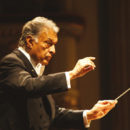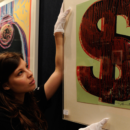
10 tips on buying your first piece of art
01 FIRST, FIGURE OUT WHAT KIND OF ART YOU LIKE
The better education you have, the better collection you’ll have. The art world can be really overwhelming. We suggest you go to museums and art galleries and talk to dealers and artists to familiarize yourself with various periods, mediums, and style.
The important thing to do is really get a sense of your taste and what you like. And the best way to do that is to go see a lot of art. Very often you evolve from what you originally thought you liked— sometimes it’s before you buy your first piece, because you did a little research. But unfortunately sometimes it’s after you buy your first piece; this could be because your taste becomes more sophisticated or you find that you like abstract or conceptual work better, which is tougher to chose when you are buying for the first time.
The internet can be a great resource for figuring out what kind of art suits you best, figuring out what your taste is, and discovering artists you didn’t know exist. Websites like Artsy, Artnet and Artinfo can provide helpful information.
02 TRY TO SEE EVERY PIECE YOU’RE CONSIDERING IN PERSON
Once you’ve narrowed down the list, make an effort to see every piece you’re thinking of buying. They might look different up close and personal than they do on a computer monitor. Talk to dealers and gallerists to find out about the reputation of the artist you like. Has he won any awards? Has her work appeared in any major shows? Are there any periods for which he’s particularly well known? Be aware that gallerists are usually trying to sell you something.
03 DETERMINE WHAT YOU’RE BUYING
Are you buying something that you love and want purely because you think it’s great? Or are you buying something that you love but you secretly want to be an investment? There are different types of purchases in the art world. If you’re buying it because you love it, it’s much easier. All you have to do is figure out if you can afford it, and if the price is something that you think is worth the passion you have
for it. If you’re buying with an eye toward investment and you want it to actually have long-term value in the future, it’s a little bit more tricky. It’s very important for a first-time collector to know that there are various factors that affect the price of the work, for example, a work on canvas is generally more valuable than a work on paper by the same artist; or if it’s an edition versus a one-of-a-kind piece.
The things that you might regret in purchasing are not any works that you purchased, but the works that you didn’t purchase. Talk to an appraiser or experienced collector about the price you’re paying. It’s hard to establish comparable value in art, so ask the opinion of a professional appraiser or experienced art collector to make sure you don’t overpay. But if you really love a piece of art, trust your instincts and go for it. Life is short and you want to be inspired.









